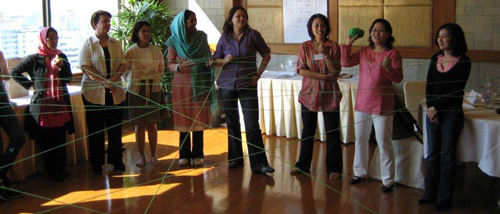Designing learning solutions
The aim of designing the right learning solution is to improve individual and group performance in order to increase organizational efficiency and effectiveness. Learning solutions can be designed in various ways depending on the challenge at hand. We often use a ten-step approach that was initially developed for one of our clients and is an adaptation of the well known five-phase ADDIE instructional design process and a few other models that have proven their value. ADDIE is short for Analyze, Design, Develop, Implement and Evaluate.
As facilitators of learning we provide solutions and create conditions that support learning, as well as delivering training. This is the reason why we talk about learning interventions, programmes or activities instead of training. Learning solutions can take a wide range of forms from traditional courses, training or workshops, to on-the-job and distance learning programmes, and tools and instruments that support learning processes.

Examples of ‘Design’ projects include:
- Facilitation of Protection Learning Programme, a blended learning programme for designers and facilitators of learning interventions
- Train the Trainer programmes, different workshops and training for content experts who conduct training and presentations
- UNHCR Toolkit for Designing Learning Solutions, an instrument that guides its user to the instructional design process
- Personal Learning Journal, a tool that supports a person’s individual learning process
- Facilitator- and user guides for different learning programmes and systems
- Evaluation of learning programmes
- Development of a learning assessment strategy
Resources and Tools
UNHCR Toolkit for Designing Learning Solutions - Summary - Alberink, B. and Brückner, G. (2009)
The Eight Field Instrument - Kessels, J.W.M., Smit, C.A. and Keursten, P. (1996)

